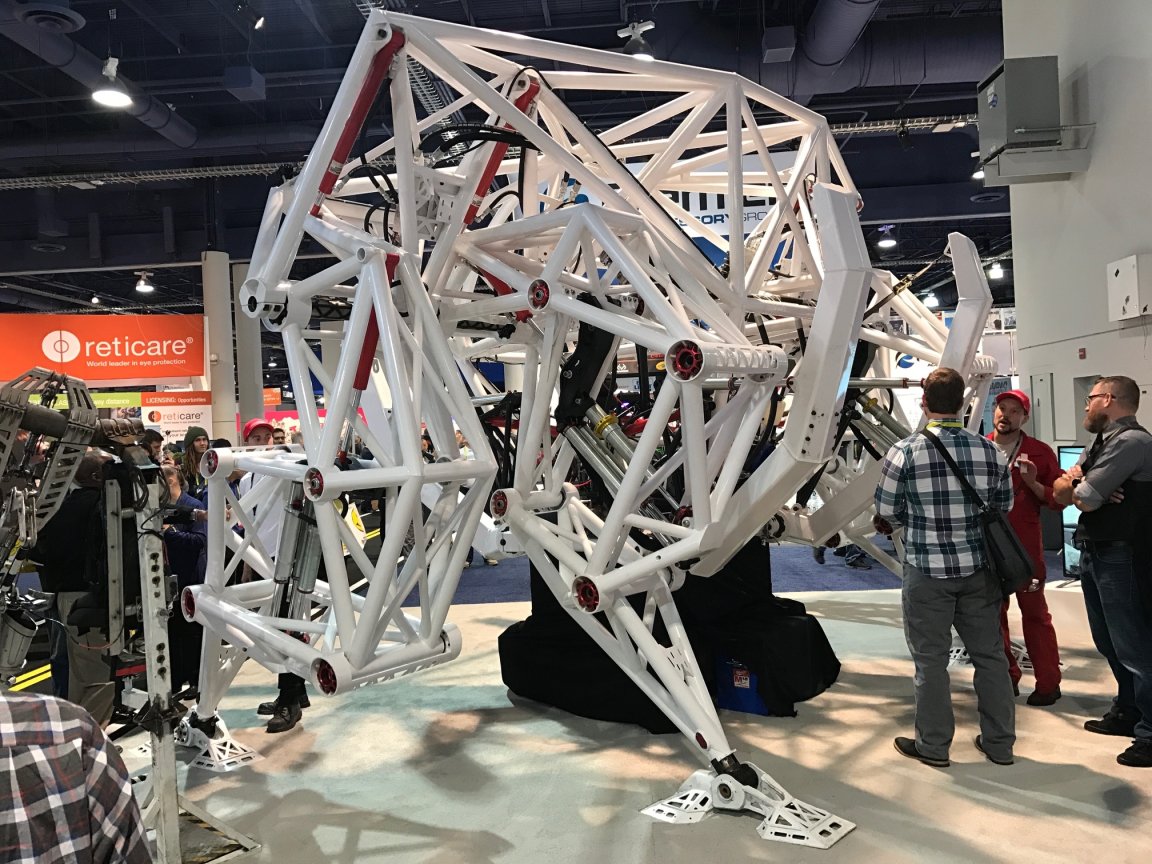
Giant Robotic Insect
Remember that giant robotic exosuit—the one Sigourney Weaver used in her epic mêlée with the queen alien at the end of Aliens? Or all those giant robots that show up in just about every Japanese anime? Well, if you liked those…you’d better be sitting down.
Because the Furrion Robotics Division has debuted, at CES 2017 in Las Vegas, a giant mechanized exosuit that just might be the first step toward that sci-fi future. It’s called “Prosthesis” (unimaginative name, true, but the thing largely speaks for itself), and it looks like a fantastic congeries of girders and steelwork that’s come to life in the form of a giant, robotic insect.

The Prosthesis is 14 feet tall, 16 wide, and tips the scales at 7,700 lbs.; the sticking point, however, is in how the mechanical monstrosity is operated. Details are still forthcoming, but it apparently involves strapping the user into a “cockpit” of sorts, where some sort of haptic technology translates the user’s limb movements to the movements of the robotic exoskeleton.
“Inside is a full-body exoskeletal interface,” explains Jonathan Tippett, founder, and CEO of Furrion Robotics. “The pilot straps in, face down, and has their whole upper body kind of cradled by this articulated, carbon-fiber harness; their arms and legs are free to move, and there’s an exoskeletal interface on each of your limbs, which maps the motion of your limbs to the four limbs of the machine.”
Augmented Athleticism
The purpose of this suit? The mech (Tippett is careful to draw a distinction between human-controlled “mech” and autonomous robots) is designed with one purpose in mind: racing. Its creators claim that the all-electric Prosthesis can attain speeds of 20 mph, hopefully combined with an agility that cars just cannot match. It’s envisioned as the first element of a new sport—one in which human beings outfitted with gigantic mechanized suits like the Prosthesis achieve new forms of augmented athleticism.
According to Tippet: “The whole point is to create a new human experience for the pilots, who would have to be athletes to operate it.”
And this ties into the philosophy behind the creation of the Prosthesis—a philosophy that rejects the current trend toward automation that has reached almost faddish levels in the tech world and returns control to the human being…ironically, perhaps, a human being surrounded by a massive technological exoskeleton. It’s an interesting concept, after all the autonomous car tech and AI software that’s been on display on the CES showroom floor this year.
“I wanted to create a machine that required human skill and practice to operate,” Tippett explains, a dream that grew out of his experiences as a mountain biker.
So we’re eager to see, in the coming months, what comes of Furrion’s new gadget. Tippett’s dream of a device that engages with human beings, changes the way we interact with machines, and allows us to hone new skills, certainly seems more exciting than the world promised by autonomous tech—a caretaker world, essentially, in which control is taken away from us untrustworthy creatures of flesh and blood.
“It was kind of a counterpoint,” he observes, speaking of the philosophy animating the creation of the Prosthesis, “to all the things that are being automated and ritualized in our lives.”